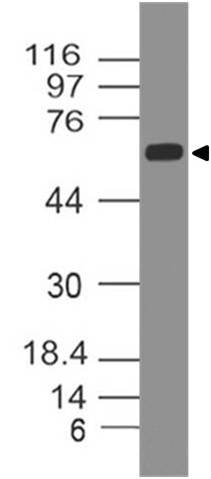Haptoglobin Native Protein(Discontinued)
Shipping Info:
For estimated delivery dates, please contact us at [email protected]
| Amount : | 1 mg |
| Purification : | Greater than 95.0%. |
| Content : | Lyophilized with no additives. |
| Storage condition : | Human Haptoglobin although stable at room temperature for 3 weeks, should be stored desiccated below -18C. Upon reconstitution IL18 should be stored at 4C between 2-7 days and for future use below -18C. For long term storage it is recommended to add a carrier protein (0.1% HSA or BSA). Please prevent freeze-thaw cycles. |
| Alternative Name : | Haptoglobin, HP, BP, HPA1S, MGC111141, HP2-ALPHA-2. |
Source : Pooled human plasma. Human Haptoglobin produced from pooled human plasma corresponding to the Mw of isotypes of Haptoglobin at 86kD and >200kD. Haptoglobin is a glycoprotein which is synthesized in the liver and circulates in the blood. Haptoglobin is produced typically by hepatocytes but also by other tissues: e.g. skin, lung, and kidney. It is a positive acute phase protein that binds free hemoglobin and removes it from the circulation to prevent kidney injury, and iron loss following hemolysis. The haptoglobin-hemoglobin complex is subsequently removed by the reticuloendothelial system (generally the spleen). As the reticuloendothelial system removes the haptoglobin-hemoglobin complex from the body, haptoglobin levels are reduced in hemolytic anaemias. In the course of binding hemoglobin, haptoglobin sequesters the iron inside hemoglobin, preventing iron-utilizing bacteria from benefitting from hemolysis. Haptoglobin consists of two a- and two b-chains, connected by disulfide bonds. Three major haptoglobin phenotypes are known to exist (Hp 1-1, Hp 2-1, and Hp 2-2). Hp 1-1 is biologically the most effective in binding free hemoglobin and suppressing inflammatory responses associated with free hemoglobin. Hp 2-2 is biologically the least active, and Hp 2-1 is moderately active. Haptoglobin's molecular mass ranges from 8-200 kDa.Reduced levels can be seen in haemolysis and impaired liver function. High levels are a marker for acute or chronic inflammation. Ahaptoglobinemia or hypohaptoglobinemia are caused by mutations in the haptoglobin gene and/or its regulatory regions. Haptoglobin is also linked to diabetic nephropathy, the incidence of coronary artery disease in type 1 diabetes, Crohn's disease, inflammatory disease behavior, primary sclerosing cholangitis, susceptibility to idiopathic Parkinson's disease, and a reduced incidence of Plasmodium falciparum malaria.
It is recommended to reconstitute the lyophilized Haptoglobin in sterile water not less than 100µg/ml, which can then be further diluted to other aqueous solutions.
For Research Use Only. Not for use in diagnostic/therapeutics procedures.
|
There are currently no product reviews
|
















.png)










